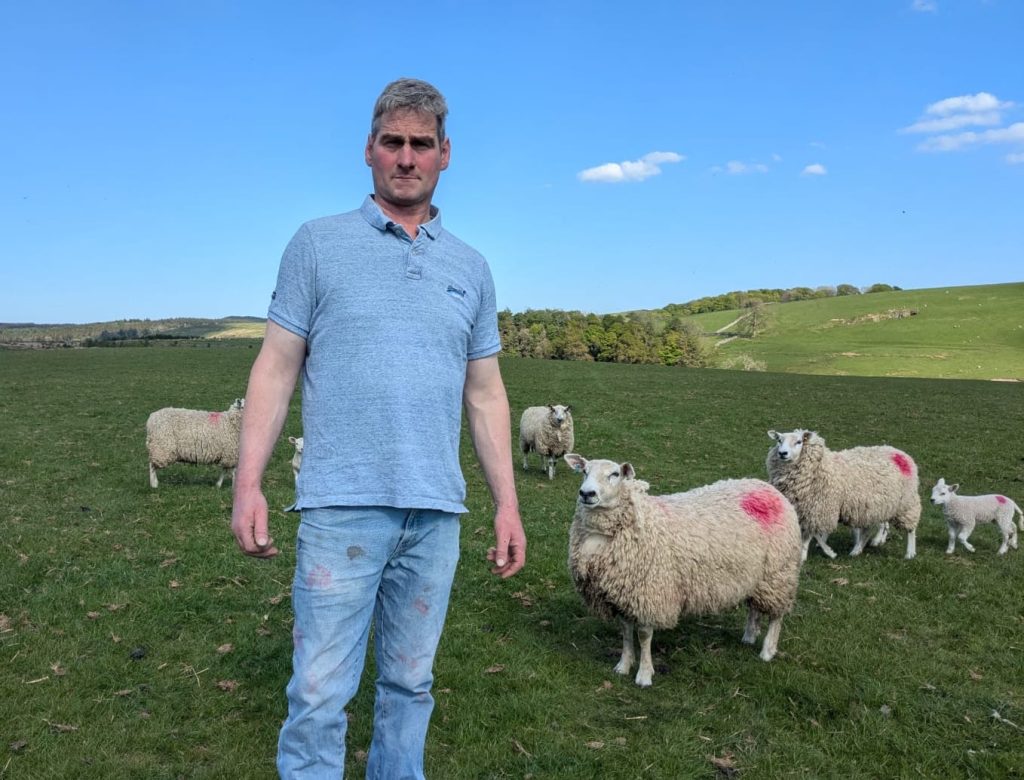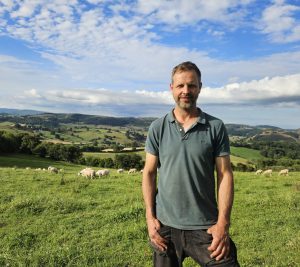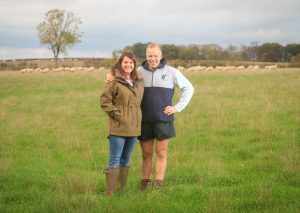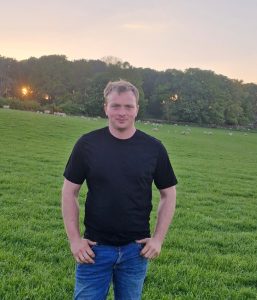with thanks to Geordie Parker, Slaidburn, Lancashire
Geordie Parker has developed a blueprint which he says in the near future will help the unit to stand on its own two feet without support payments. Key to his strategy are Innovis genetics which are proving to be the baseline to successfully develop a low cost, solely forage based operation with maximum output.
“Since we’ve swapped our Continental cross flock for Innovis’s Abermax and Aberfield we’re easily getting good weights – the entire crop is finished off grazed grass to an average 22kg in 18 to 20 weeks and sold deadweight,” he says. “We’re not only annually saving 15 tonnes of concentrate fed to the ewes and another 15 tonnes of creep, but we’ve also successfully lambed the flock outdoors for the last three years, apart from the hoggs and triplet carrying ewes; we’re saving seasonal labour, even in 2024 in the most challenging of weather, I managed the job myself with a bit of help from the family.”
Geordie says he used to chase Beltex and three quarter bred Texel in an attempt to top the market. “Sometimes we did, but it came at a cost – we were finishing a third of the lambs indoors on concentrate and it took up to 10 months for the entire crop to go.
“Then we came across the Innovis team at an NSA North Sheep event, found they seemed to talk common sense about cost of production, and making more from a grass-based system, and grass is something we’re good at growing.
In fact, these Abermax sired lambs grew every bit as fast without any concentrate, if not faster than the Continental cross lambs.
“We went on to swap a couple of terminal Continental sires for two Abermax tups and found their lambs grew just as well with the first draw weaned off grass at 14 to 16 weeks, averaging 20kg to 24kg deadweight and grading R3 or better with some Us and Es. We continued drawing at one or two-week intervals. In fact, these Abermax sired lambs grew every bit as fast without any concentrate, if not faster than the Continental cross lambs.
“Our interest in Innovis genetics grew from there; they’d been talking about breeding a smaller more efficient ewe that thrived off forage, so we went on to invest in the maternal Aberfield to build a closed flock. Nowadays most of our ewes are Aberfield, they’re averaging 70kg mature weight and maintain themselves in average BCS 3 off grazed grass, supplemented in winter with haylage and silage.
“The flock is averaging 175% to 180% scan, that’s enough, we don’t want 200%. Previously we’d only put the bigger hoggs to the tup, whereas nowadays they’re all getting the chance and going on to scan 100% to 105%. The vast majority of the flock is lambing within the first three weeks. We’re finding these Aberfields are easily lambed, they’ve plenty of milk and they’re very motherly.
Ram calculator
| Beltex | Texel | Abermax | |
| Ram price (£) | 1,000 | 1,000 |
| Ram : ewe ratio | 1:40 | 1:75 |
| Longevity (ave mating seasons) | 3 | 5 |
| Mating cost (£ per ewe) | 8.33 | 2.66 |
“Furthermore, the tups themselves cover a lot more ewes and last longer. Previously we put one tup to 40 ewes and they worked for two to three years, nowadays the Innovis ratio is one tup to 75 ewes for four to five years.”
Innovis is able to apply real selection pressure since it is commercially farming relatively large populations of sheep tested in different systems.
Geordie has been buying tups either online or over a call to the Innovis team for over five years. “I’ve built up a long-term trusted relationship. Selection is relatively straight forward, even if you don’t totally understand EBVs. You just have to go online, answer a few questions and Innovis sends a tup that fits. When he arrives, sometimes, you think you wouldn’t pick him out at a sale, and whilst I still like to have something to look at it’s the bottom line that really matters. It’s the in-depth performance recording and health screening that I value and the trust I have in Innovis to deliver tups that do the job. Innovis is able to apply real selection pressure since it is commercially farming relatively large populations of sheep tested in different systems. It’s range of different breeds means it’s able to offer farmers like me a ram to suit our systems in most cases.”



